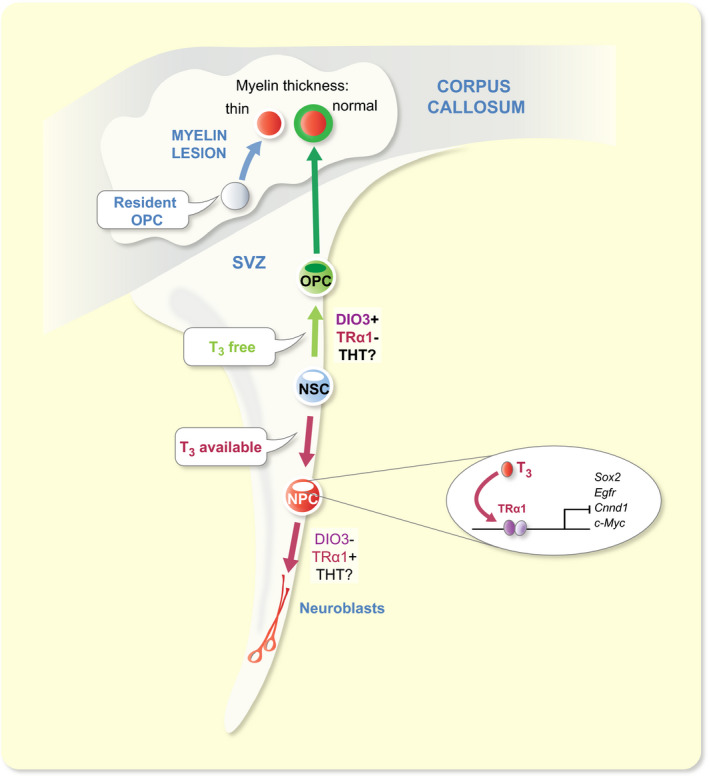Figure 2.

TH signalling regulates cell fate decision within the SVZ niche of the adult mouse. T3 drives NSC commitment preferentially towards a neuronal fate. T3, through its nuclear receptor TRα1, downregulates many target genes, thus promoting de novo generation of neuroblasts. In contrast, determination of glial cell fate depends on a T3‐free window. SVZ‐OPCs are protected from the effects of T3 by (i) the expression of DIO3 and (ii) the absence of TRα1. Later, T3 is necessary to induce differentiation and maturation of oligodendrocytes capable to functionally repair a myelin lesion in the corpus callosum. Compared to SVZ‐OPCs (complete remyelination), resident parenchymal OPCs (thin, insufficient remyelination) are less efficient for functional brain repair
